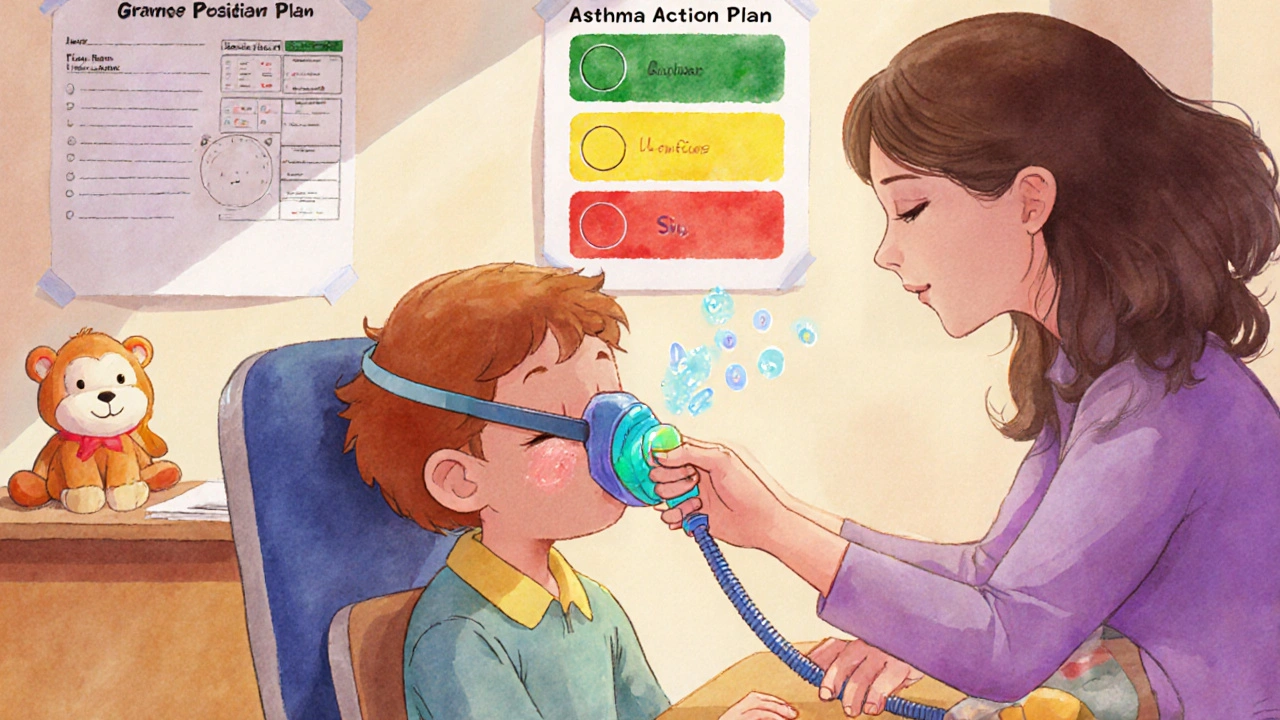Inhaler Spacer Technique: How to Use It Right for Better Asthma and COPD Control
When you use an inhaler spacer, a tube-like device that connects to your inhaler to help deliver medication directly to your lungs. Also known as a chamber, it’s not just an accessory—it’s often the difference between medicine that works and medicine that just sits in your mouth. Many people with asthma or COPD don’t get full benefit from their inhalers because they don’t coordinate the puff with their breath. A spacer fixes that. It holds the medicine in a chamber so you can breathe it in slowly and deeply, letting more of it reach your airways instead of sticking to your throat or tongue.
The inhaler spacer, a simple plastic or metal tube with a mouthpiece and a place to attach the inhaler is especially important for kids, older adults, and anyone with weak hand-breath coordination. Studies show that using a spacer can double the amount of medication that reaches the lungs compared to using an inhaler alone. It also cuts down on side effects like oral thrush and hoarseness—common problems when steroids from inhalers linger in the mouth. If you’re on a corticosteroid inhaler, rinsing your mouth after use helps, but a spacer makes that step even more effective by reducing how much drug lands where it shouldn’t.
Not all spacers are the same. Some are rigid plastic tubes, others are soft and collapsible. Some have one-way valves to help you inhale more easily. The key is using it right: shake the inhaler, attach it to the spacer, press the inhaler once, then breathe in slowly through your mouth over 3 to 5 seconds. Hold your breath for 5 to 10 seconds, then breathe out. Repeat if your doctor told you to take more than one puff—wait 30 to 60 seconds between puffs. Clean your spacer weekly with warm water and let it air dry—no towels, because they create static that traps medicine.
You’ll find posts here that dig into how spacers fit into broader respiratory care. One article talks about obstructive pulmonary disease and how staying active with the right tools—like a spacer—can help you breathe better during daily movement. Another explains how ketotifen, a mast cell stabilizer used for allergies and asthma works alongside inhalers for long-term control. There’s even a guide on inhaler use, how to avoid common mistakes that reduce medication effectiveness—mistakes that spacers are designed to prevent. These aren’t theoretical tips. They’re real-world fixes used by people who manage these conditions every day.
Using your inhaler without a spacer is like trying to fill a bucket with a漏斗—most of it spills. With a spacer, you’re not just following instructions—you’re taking control. Whether you’re new to inhalers or have been using them for years, this collection gives you the practical, no-fluff advice you need to make sure every puff counts.

Asthma in Children: How Spacers, Schools, and Care Plans Work Together
Learn how asthma spacers, school care plans, and proper inhaler technique help children manage asthma safely and effectively-with real tips for parents and schools in 2025.





